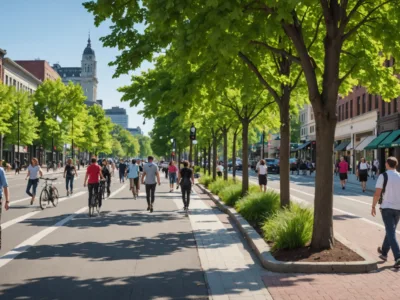International Examples Of Pedestrian-Friendly Cities | Lessons For Global Sustainability
Introduction to Pedestrian-Friendly Cities and Global Sustainability Introduction to Pedestrian-Friendly Cities and Global Sustainability centers fundamentally on a shift in urban planning and design that fosters sustainability. As we observe cities around the world, a noticeable trend towards “sustainable cities” characterized by walkability, cycle-friendly routes as well and the effective integration of public transport systems …


 Understanding sustainability revolves around the intricate concept of exploiting resources judiciously while being mindful of depleting them. Essentially, sustainability refers to the ability to meet the needs of the present without compromising the ability of future generations to fulfill their needs as well. The very crux of this concept is deeply woven into the corporate sustainability strategy that seeks a balance between social, environmental, and economic sustainability. The term ‘sustainability’ entered wider parlance following the publication of “Our Common Future,” also known as the Brundtland Report, named after the former Norwegian Prime Minister Gro Harlem Brundtland, who chaired the World Commission on Environment and Development. The report posited the idea of sustainability while underscoring its importance to the environment, thus securing it as a cornerstone concept in modern politics and policy-making.
Understanding sustainability revolves around the intricate concept of exploiting resources judiciously while being mindful of depleting them. Essentially, sustainability refers to the ability to meet the needs of the present without compromising the ability of future generations to fulfill their needs as well. The very crux of this concept is deeply woven into the corporate sustainability strategy that seeks a balance between social, environmental, and economic sustainability. The term ‘sustainability’ entered wider parlance following the publication of “Our Common Future,” also known as the Brundtland Report, named after the former Norwegian Prime Minister Gro Harlem Brundtland, who chaired the World Commission on Environment and Development. The report posited the idea of sustainability while underscoring its importance to the environment, thus securing it as a cornerstone concept in modern politics and policy-making. In the current global business landscape, sustainable business strategy is fast gaining prominence as a transformative approach that redefines conventional business proceedings.
In the current global business landscape, sustainable business strategy is fast gaining prominence as a transformative approach that redefines conventional business proceedings. 








